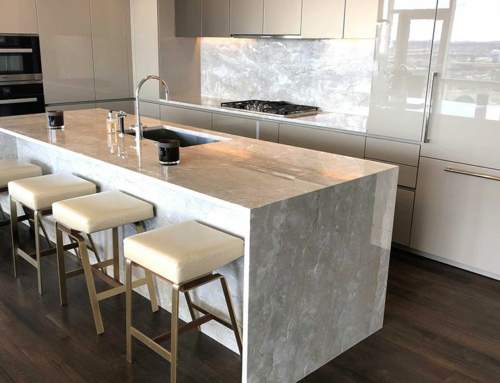Seams vs. Joints
If you’re a homeowner looking to upgrade your kitchen countertops, it’s important that you understand the differences between seams and joints used in granite, quartz, porcelain, or any other type of stone. Seams and joints are often used interchangeably, but there’s more to each than what meets the eye. In this article, we will address the intricacies of seams versus joints – from their appearances to their importance when selecting quality workmanship for your new countertop installation.
Seams are the main way that larger pieces of stone or quartz are seamlessly joined together. They are placed where two sections of material come together, either to create a solid piece or just for aesthetic reasons. The seams themselves consist of epoxy resins that contain tiny beads which act as fillers, providing a uniform appearance and texture throughout the countertop. Seams are invisible to the naked eye, making them an excellent choice for a professional finish.
On the other hand, joints are used to connect two pieces of material at their edges – usually in places like corners or edges. While seams take on a more hidden role, joints tend to be visible and can also contribute to the overall aesthetic of a kitchen or bathroom. Joints come in many shapes and sizes; some use mortar, some use caulk or epoxy resins, and others may require cutting tools such as lasers or water jets. No matter what type is used though, they all serve the same purpose: providing stability between two pieces of stone with minimal movement over time in between the two sections being connected. Seams also have a distinct look because they usually appear straight and slightly raised – this is because the beads expand over time due to their exposure to air and moisture, thus creating a noticeable line along the seam.
Joints, on the other hand, are used when multiple small pieces of stone or quartz must be fitted closely together. Joints can also be referred to as “v” cuts, grooves, or slots. They can be used to create unique patterns and textures on the countertop surface, as well as provide extra stability between smaller pieces of material (which may move slightly over time).
It’s important to understand the difference between seams and joints when selecting quality workmanship for your new kitchen countertops. Seams are generally best for larger pieces of stone where it is possible to have almost invisible joints; whereas joints are better suited for small sections that need more stability. Proficient installers should be knowledgeable of both techniques and be able to determine which type is best for your particular project. By understanding the differences between seams and joints, you can ensure that you hire an expert, like Natural Stone Designs, to ensure you are investing in a perfect countertop for your kitchen.






